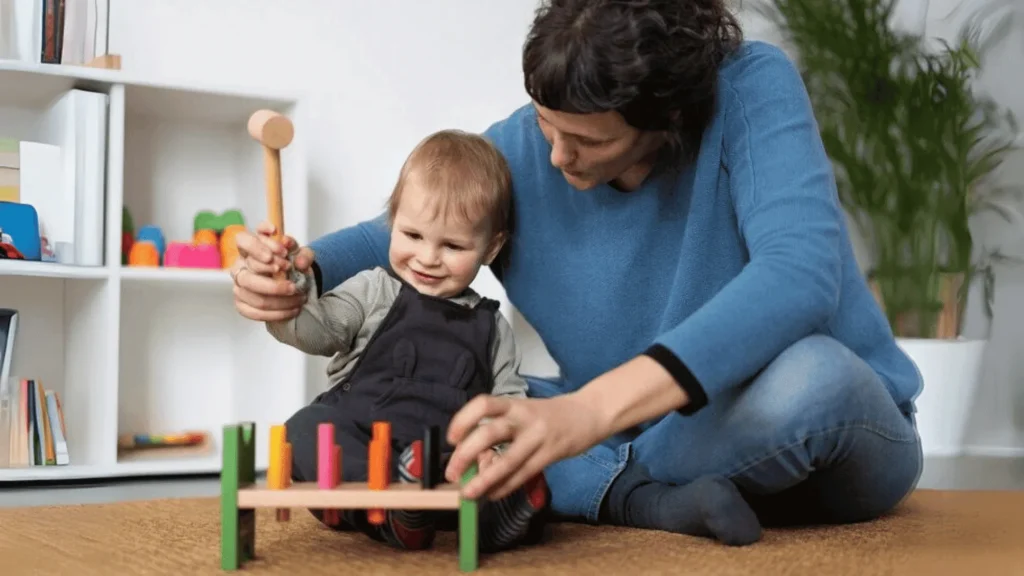All parents want their child to be socially and emotionally competent. Social-emotional intelligence is a key to success in all areas. In a meta-analysis of more than 100 studies comparing students who had high SEL (Social and Emotional Learning) to students who had little SEL, students with higher SEL:
- Were better at calming down
- Learned more effectively
- Had better grades
- Scored on average 14% higher on academic achievement tests
What are some basic social-emotional skills for children? (Gottman & DeClaire)
- Self-Awareness – identifying your thoughts and feelings and how they influence you
- Social Awareness – identifying the thoughts and feelings of others, empathy
- Self-Management – using emotions to facilitate rather than interfere with the task at hand, setting goals, dealing with obstacles
- Responsible Decision-Making – generating and implementing solutions, considering consequences
- Relationship Skills – saying no to negative peer pressure, resolving conflicts, maintaining connections
How can parents help develop social-emotional intelligence in their children?
1. Start Early
A child’s brain is highly flexible, so it is important to take advantage of this neuroplasticity early. And major brain growth continues until the child is in his or her mid-twenties.

2. Begin with Your Brain
The starting point for social and emotional intelligence is the parent’s brain. A child’s brain first relies on the parent’s brain. Primary regulation of limbic circuits—which support emotion, behavior, and memory—happens in the prefrontal cortex (PFC). Children have less developed prefrontal cortexes than adults, so they rely on parents/adults to manage their limbic systems. When adults help children calm down, they help the children make connections in their brain circuits for managing distress (primarily in the PFC). When adults are primarily reactive, neglectful, or abusive, children are less likely to develop the brain circuits for managing distress. Thus, the children will be more likely to act out impulsively and have trouble calming down when distressed.
The key factor in developing the child’s brain circuitry for managing distress is the prefrontal cortex of the primary adult(s) in the child’s life. When a parent regulates and soothes, it is highly likely that the child will learn to regulate and soothe. If the adult has not learned to calm, to focus, or to manage the stress in his or her life, the child will not have a secure home base to develop his or her own brain circuitry for managing distress.
A child learns to soothe and focus by: (1) how the adult helps them soothe and focus, and (2) observing the adult’s self-soothing and self-focusing.
Many learning tasks for a child involve focusing on things that are unpleasant. As parents soothe and focus through this unpleasantness, the child’s brain picks up this brain firing and the child is more likely to focus through the unpleasant.
Learning to calm yourself
- Your body – body scan, relaxation techniques
- Your brain – distinguish mind from brain. The brain that observes itself (mind) changes itself.
Paying attention to yourself
- Your feelings – identify and give them a voice
- Your body – body scan your points of tension
Ask yourself the following
- How do you calm yourself?
- How do you calm others?
- How self-aware are you? Do you make sense to you?
- Do you pay attention to others? Do they feel felt?
3. Focus on Calming & Attention
The keys to developing emotional intelligence and social competence in children are calming and attention. When the prefrontal cortex—the brain’s executive functioning center—is well wired and well integrated with the rest of the brain, the child is able to inhibit disruptive impulses. This allows the child to hold their focus of attention and shift their focus of attention. These are signs of good mental health.
If a child cannot manage his or her anxiety and unpleasant feelings, he or she will not be able to focus and pay attention. As a result, the child has less available attention to learn, focus, and solve problems. He or she is less able to grab on to new ideas and concepts. Too much anxiety and distress kills learning, interferes with test-taking, and inhibits focused attention. The child’s brain will register and imprint the experience of anxiety over the information that is to be learned. This makes it harder for the child to remember and to subsequently retrieve that information. The best atmosphere for learning is one in which the mind is free from distress and impulsivity and where there is an emphasis on improving attention and memory.
4. Use the Stay-Listening Technique
The Stay-Listening Technique helps a child identify their feelings, understand their emotions, attune with you, and feel soothed.
The first step in stay-listening is body posture and positioning. Start by getting on your child’s level—get on your knees or sit in a chair. Be attentive. Face your child. From this position of attunement, do the following:
- Identify with your child’s feelings: “Are you feeling sad? You are feeling sad, aren’t you?”
- Help your child understand their feelings: “You are feeling sad because I’m leaving, right?” “You don’t want me to leave, do you?”
- Connect your child’s feelings with yours: “I don’t want to leave either. I feel sad too.”
- Identify the feeling in your body and in the child’s body: “ I feel sad right here (pointing toward chest). Where do you feel sad?”

5. Take a Strengths-Focused Approach
Praise is global and may make a child feel good, but it is usually not specific enough to reinforce strengths and build confidence. Here are some methods a parent can use to build a child’s internal strength:
- Use inquiry to focus: “How did you do that?”
- Teach attention: “Look at those lines. They are so straight!”
- Reinforce confidence: “Show me how you do that!”
- Connect to the child’s feelings: “How did that make you feel when you drew those lines so straight? I bet it made you feel good and proud of yourself.”
6. Use a “Keep Calm” Activity to Help Your Child Soothe (Elias, Tobias, & Friedlander)
- Tell yourself, “Stop and take a look around.”
- Tell yourself, “Keep calm.”
- Take a deep breath through your nose while you count to five, hold it while you count to two, and then breathe out through your mouth while you count to five.
- Repeat these steps until you feel calm.
7. Be the Guide
- Practice calming and quieting in your own life before trying it with your child.
- You are a co-learner and guide – be the first learner and then create the atmosphere for learning.
- Focus on active, participant learning with your child. Use incidental learning. “How did that feel when that happened?”
- Create mindful learning – go slow, stop, take things in, start again, go and take it in again.
- Create rituals for quietness, stillness, and focus.

8. Handle the Low Road
All parents get overwhelmed and react negatively, and then feel guilty for going down the low road. Here’s how you can handle the low road:
- Be aware of yourself and calm yourself. Take a break. Stretch. Get fresh air. Once you’ve taken a break and are settled back in yourself, go back to your child and reconnect.
- Repair the rupture. Be ready for the rejection. Don’t go back to your child until you are fully ready. Own what you did. Apologize. “What I just did when I was screaming and yelling, I’m really sorry for that. That must have been scary for you. I got triggered and I lost it. I’m sorry.” Keep it simple and loving. This gives the child hope for reconnection and clarity.
9. Be Patient with Yourself and with Your Child
With time and practice, your child will grow and mature in social-emotional intelligence. Children go through development stages and are neurologically incapable of acquiring too many skills at one time. Each skill needs to be reinforced adequately before moving to the next. Lowering your parental expectation on perfection and quantity will help you to be more realistic, patient, and calm with yourself.
10 Have Fun!
Escape into play. Laugh. Let responsibilities go. These little escapes into play help a child to refocus and return back to tasks with renewed focus. They help children and parents calm, soothe, and regain self-awareness. They build connections and social bonds. Play will keep both you and your child young. As George Bernard Shaw once said, “We don’t stop playing because we grow old. We grow old because we stop playing.”
Resources
Raising an Emotionally Intelligent Child (1998), Gottman & DeClaire
Building Emotional Intelligence: Techniques to Cultivate Inner Strength in Children (2014), Lantieri
Emotionally Intelligent Parenting: How to Raise a Self-Disciplined, Responsible, Socially Skilled Child (2000) Elias, Tobias, & Friedlander.
Casel.org (Collaborative for Academic, Social, and Emotional Learning)
Additional reading for you:
- Homework Strategies for Children
- 5 Ways to Help your Child Navigate Stress
- BMI and Children – should we do something?
- Four Suggestions for a Good Start to the New School Year

